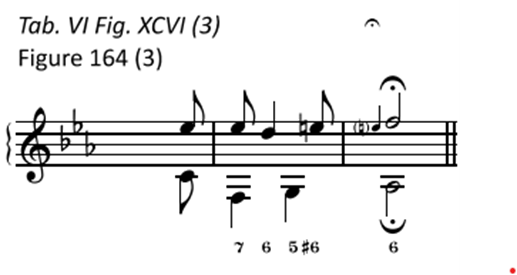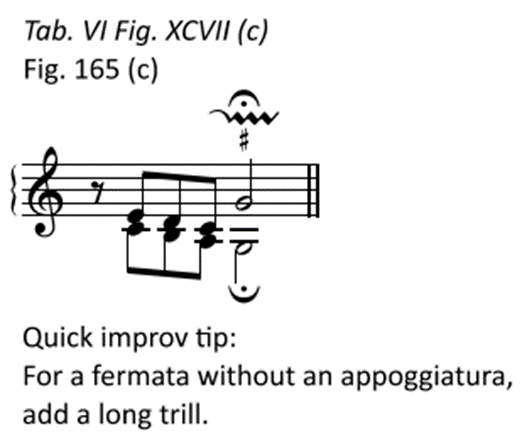C.P.E. Bach: Versuch über die wahre Art das Clavier zu spielen
(Part One 1753, Berlin)
(Essay on the True Art of Playing Keyboard Instruments)
I am always interested in original sources, and this is one of the best for keyboard players. C.P.E. would have formed many of his ideas from his father, the great J.S. Bach. At the same time, he was very much part of the next generation and was well known and respected on his own merits. It is well worth the effort to study the text either in the original German or the English translation. Having made my way through both, it takes time to wade through the antiquated writing style and sort out the musical examples. The following study guide is intended to make the text more accessible by providing a summary of each paragraph along with audio clips of the musical examples.
Study Guide: Summary and Examples
Chapter Two, Embellishments: The Ornamentation of Fematas
THE ORNAMENTATION OF FERMATAS
1) C.P.E. declares he does not want to delve further into ornaments other than the ones discussed, but he does see the need to discuss their use in connection with fermatas (i.e. the elaboration of fermatas).
2) Fermatas are often used to bring particular attention to a musical moment. The symbol is a slur with a dot underneath, which shows a tone should be held as long as needed (determined by the context of the piece and passage).
3) Sometimes a note may be held without using the fermata sign for expressive purposes. Other than that, there are 3 places a fermata appears:
- Over the next to the last bass note
- Over the last bass note
- Over the rest after the last bass note
Used correctly, the sign should be placed at the beginning and again at the end where fermatas are to be elaborated.
4) Where the 3 types of fermatas are found:
- Over rests: usually found in allegro movements and are not embellished
- Over the next to last and last: these 2 cases are found in slower more expressive movements and must be embellished for the sake of good taste.
5) Figure 164 shows several examples of fermatas with suggestions for elaborations. All are at a slow to moderate tempo. It is important to be aware of a composition’s character and context when performing the elaborations. Similar cases can be inferred through the figured bass.

















6) If you are not capable of creating your own elaborations for fermatas, C.P.E. gives a few tips on workarounds:
- For an appoggiatura a step above a final tone: use a long ascending trill (Figure 165, ex. a)
- For an appoggiatura a step below: play it simply and trill the final tone (Figure 165, ex. b)
- Without an appoggiatura: use a long ascending trill (Figure 165, ex. c)




SOURCES
Bach, C.P.E. Essay on the True Art of Playing Keyboard Instruments. Translated and edited by William J. Mitchell, W.W. Norton & Company, 1949, pp. 143-146. Bach, Karl Philipp Emanuel. Versuch über die wahre Art das Klavier zu spielen. Edited by Walter Niemann, C.P. Khant, Leipzig, 1925, pp. 78-80.
CLICK HERE to download a pdf version of this study guide